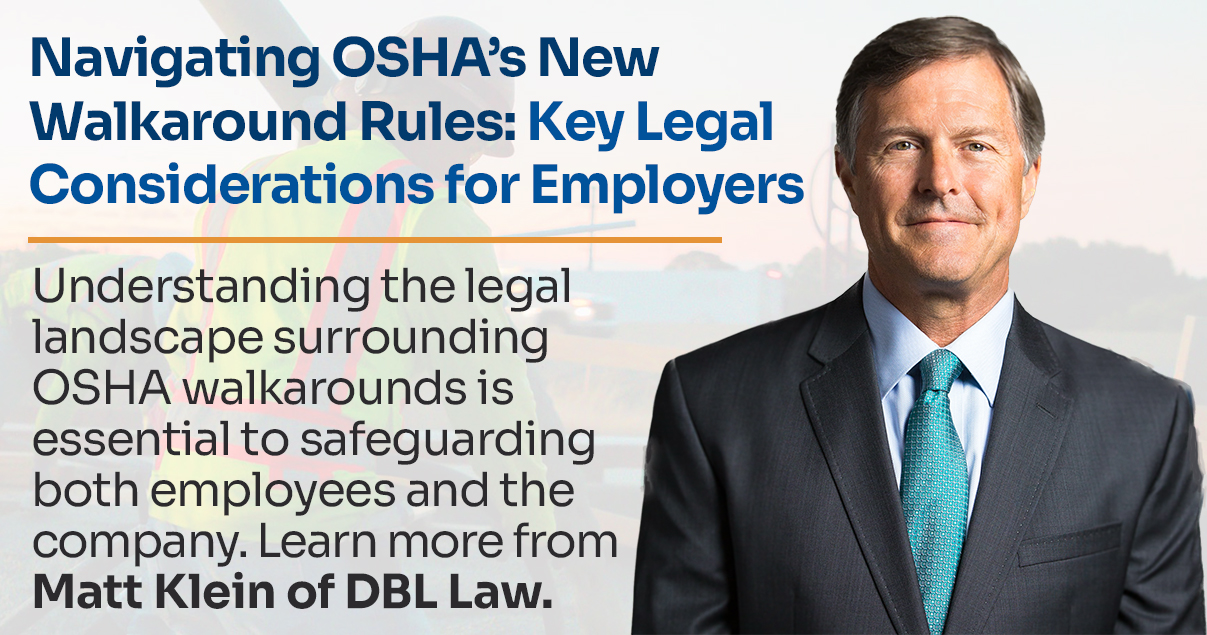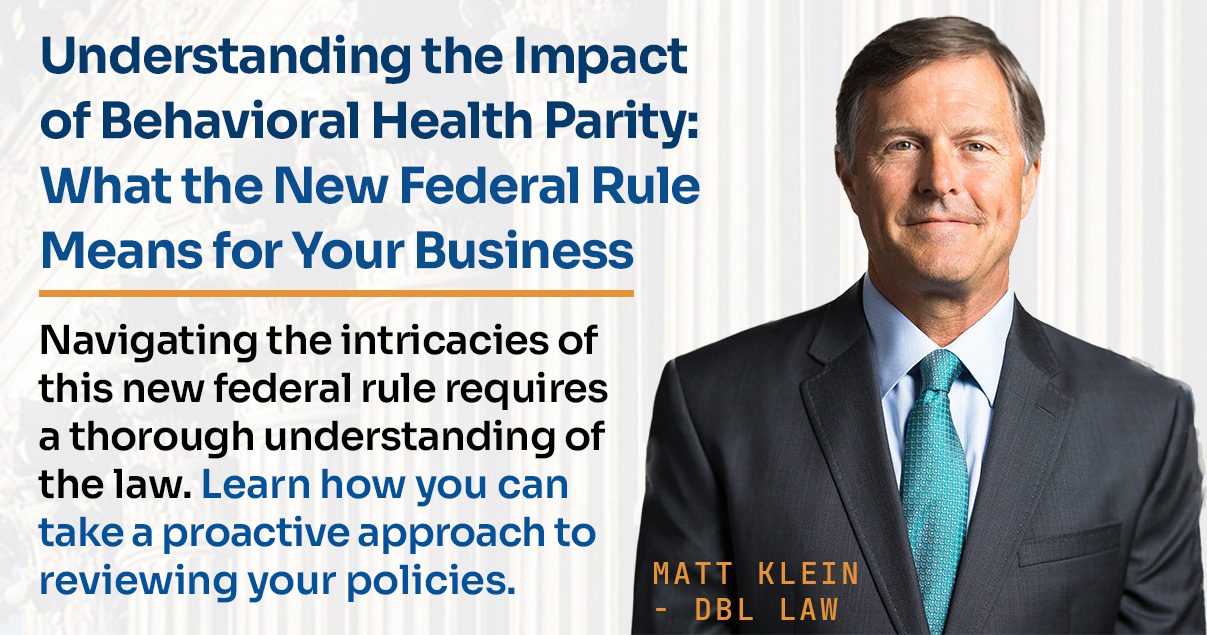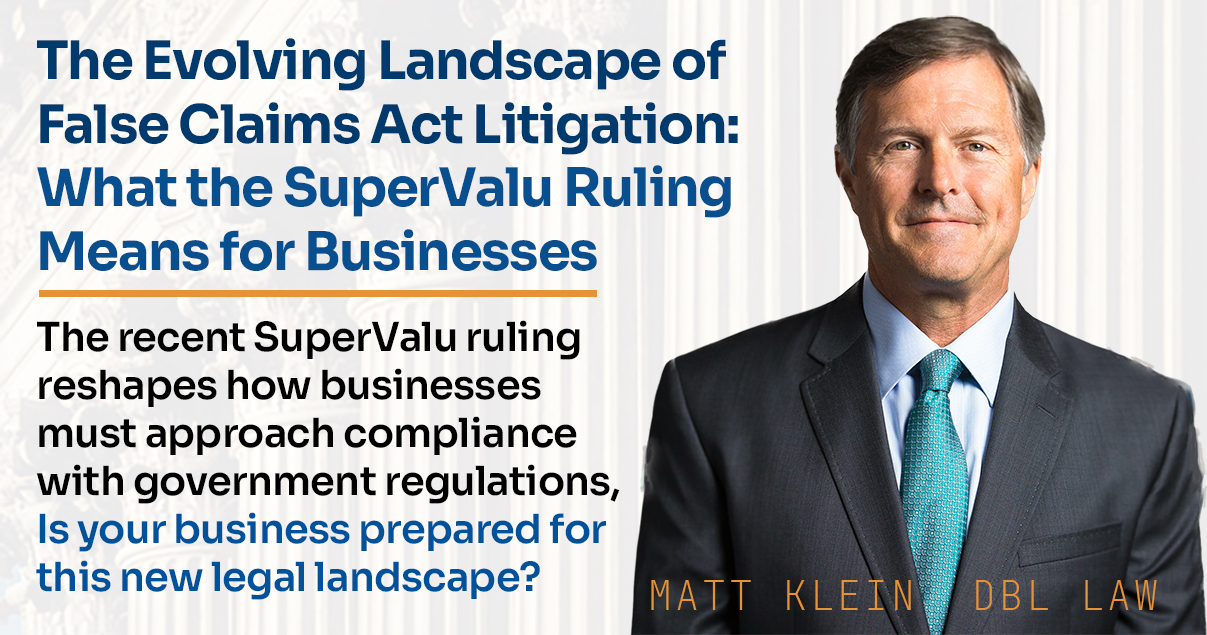OSHA’s New Walkaround Rule: What Employers Need to Know
By Matt Klein, Partner at DBL Law
The recent changes to OSHA’s employee walkaround rule, effective as of May 31, have stirred significant discussion and concern among employers. This rule now allows employees to appoint a third-party representative to accompany OSHA inspectors during workplace inspections. OSHA believes this change will enhance the inspection process by providing inspectors with better access to information and increasing worker participation in safety evaluations.
However, not everyone views this development positively. Many in the business community are raising concerns about the potential implications, particularly regarding safety, liability, and the protection of confidential information. The rule’s language has been criticized as vague, leaving employers uncertain about how these third-party representatives might impact the inspection process.
Historical Context and Legal Challenges
Historically, employees have always had the right to have someone accompany them during OSHA inspections, but this typically involved a colleague or someone with specialized safety knowledge. The new rule expands this to include any third-party representative, which has sparked legal challenges from industry groups. These groups argue that the rule could be exploited, particularly by union representatives seeking to gain access to non-union workplaces. They believe that this change could disrupt the balance between labor and management and may lead to unnecessary conflicts.
Several business organizations have already filed lawsuits challenging the rule, arguing that it oversteps OSHA’s authority and could lead to unintended consequences. They are particularly concerned about the potential for third-party representatives to access sensitive information or disrupt operations without adequate safeguards in place.
Broader Implications for Employers
The rule also broadens the scope of who can be considered a suitable third-party representative. Unlike previous practices, where the representative often had safety-related expertise, the new rule allows for individuals with no specialized knowledge to participate, provided they can assist in communication or provide other forms of support. This shift raises concerns about the qualifications of these representatives and their potential impact on the inspection process.
Another significant concern for employers is the lack of clear requirements for confidentiality agreements. The rule does not explicitly require third-party representatives to sign confidentiality agreements before participating in inspections, which leaves employers vulnerable to potential breaches of sensitive information. While OSHA guidelines suggest that such agreements might be reasonable, the absence of a firm requirement adds to employers’ unease.
What’s Next?
As the new rule begins to take effect, many employers are adopting a cautious approach, particularly in regions where union activity is prevalent. Employers have the option to challenge the inclusion of a third-party representative during an inspection, but the final decision rests with OSHA’s area director. If the director approves the representative, employers may face difficult choices, including the possibility of OSHA taking further action if objections persist.
The ongoing legal challenges to the rule, combined with recent changes in how courts interpret agency authority, suggest that there may be further developments in this area. Employers should stay informed and consider seeking legal advice to navigate the complexities introduced by this new regulation. At DBL Law, we are closely monitoring these changes and are here to help clients understand and respond to the evolving regulatory landscape.





